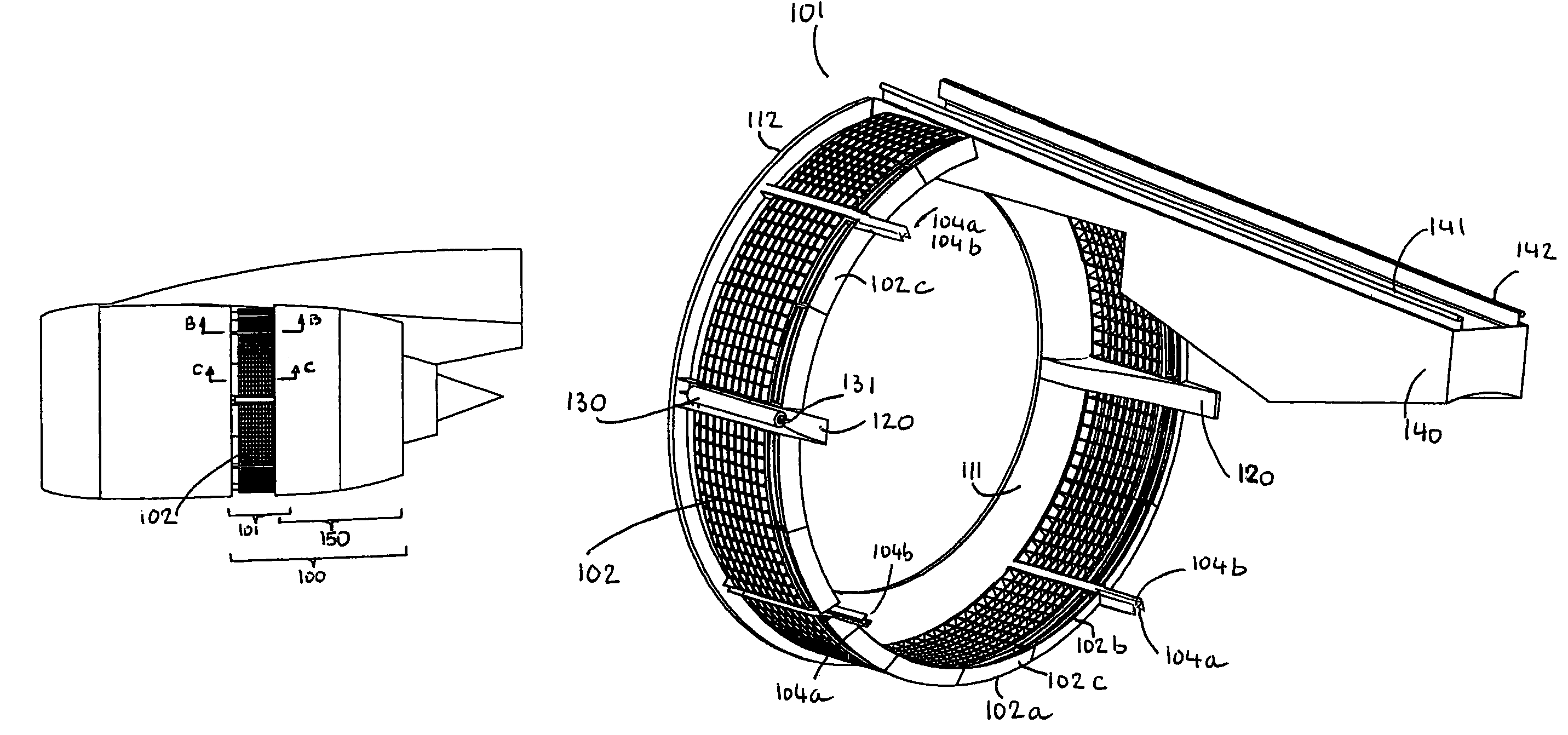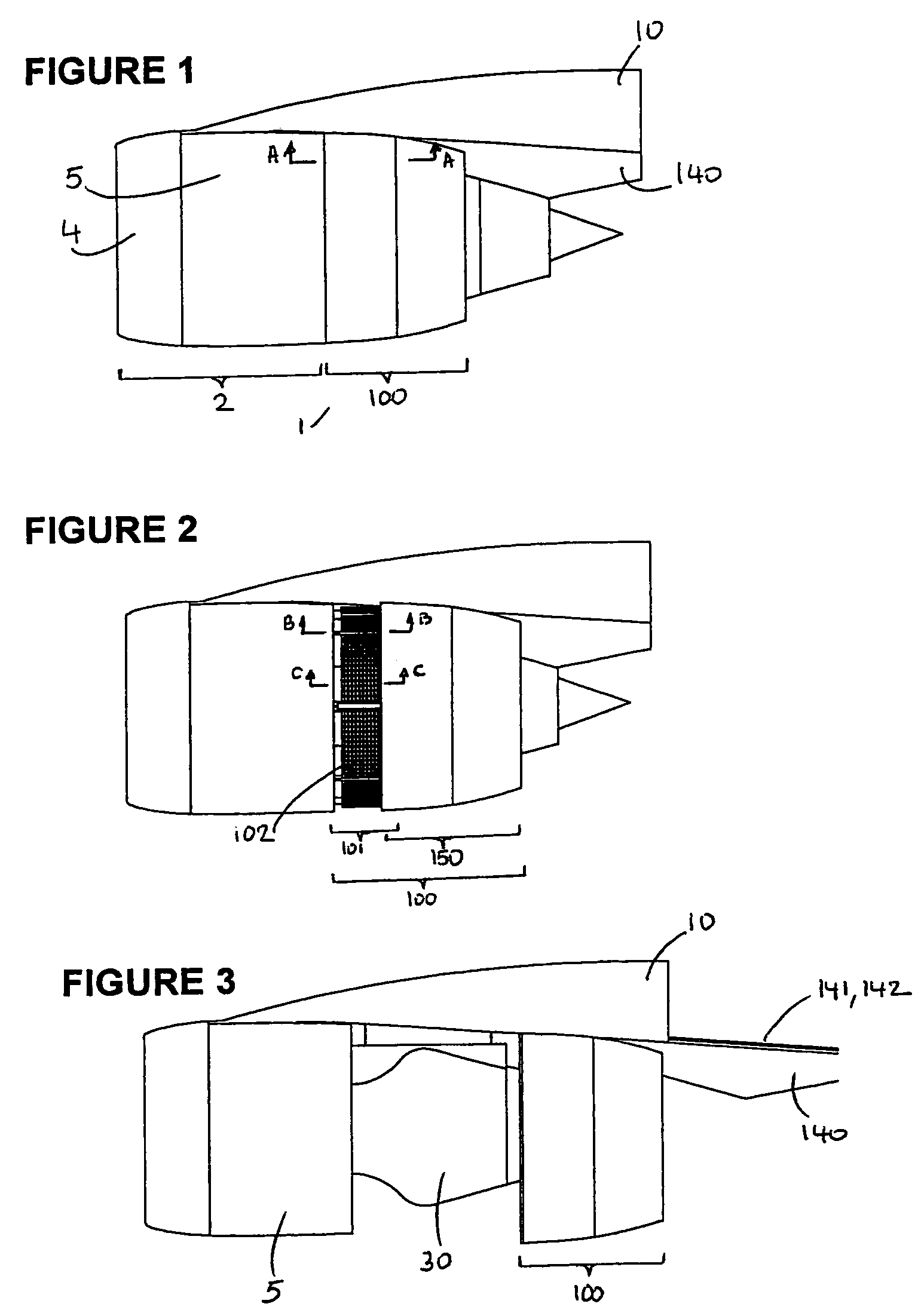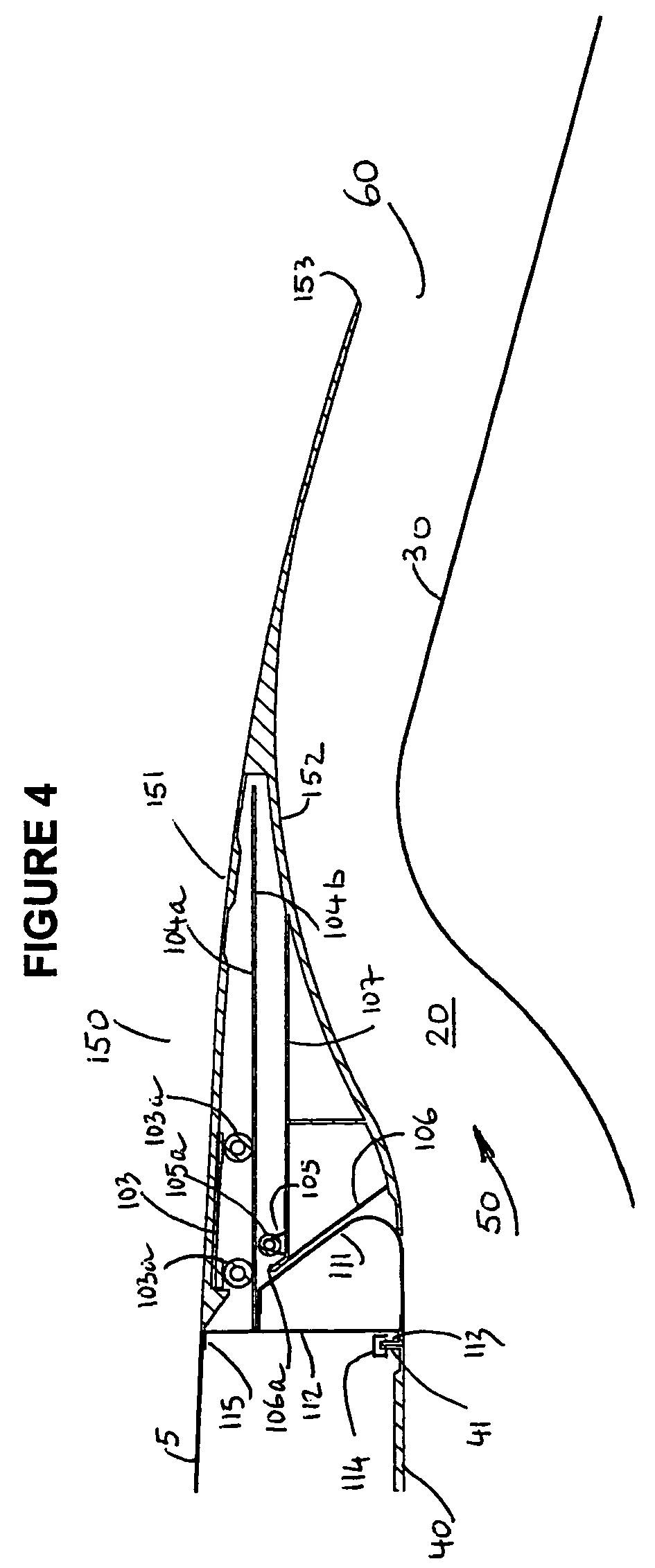Cascade reverser without blocker doors
a reverser and cascade technology, applied in the field of aircraft engines, can solve the problems of increasing the complexity and increasing the overall weight of the assembly, and increasing the weight of the nacell
- Summary
- Abstract
- Description
- Claims
- Application Information
AI Technical Summary
Benefits of technology
Problems solved by technology
Method used
Image
Examples
Embodiment Construction
[0031]The principles of the present invention and their advantages are best understood by referring to the illustrated embodiment depicted in FIGS. 1-11 of the drawings, in which like numbers designate like parts.
[0032]With reference to FIG. 1 the turbofan engine is housed by a nacelle 1 and is supported by a pylon 10 mounted on an aircraft. The nacelle 1 includes a forward portion 2 and a rear portion 100. The forward portion typically forms the air inlet 4 and the fan cowling 5. The rear portion 100 houses the thrust reverser and is composed of a translating cowl defined by a forward structure 101 and a rear structure 150 (FIG. 2). As it will be described, the forward and the rear structures have an operative mode that corresponds to the direct or reverse thrust modes of operation of the engine and an inoperative mode that corresponds to the access to the engine. FIG. 1 shows the operative mode of the translating cowl in its forward thrust position. FIG. 2 shows the operative mode...
PUM
 Login to View More
Login to View More Abstract
Description
Claims
Application Information
 Login to View More
Login to View More - R&D
- Intellectual Property
- Life Sciences
- Materials
- Tech Scout
- Unparalleled Data Quality
- Higher Quality Content
- 60% Fewer Hallucinations
Browse by: Latest US Patents, China's latest patents, Technical Efficacy Thesaurus, Application Domain, Technology Topic, Popular Technical Reports.
© 2025 PatSnap. All rights reserved.Legal|Privacy policy|Modern Slavery Act Transparency Statement|Sitemap|About US| Contact US: help@patsnap.com



